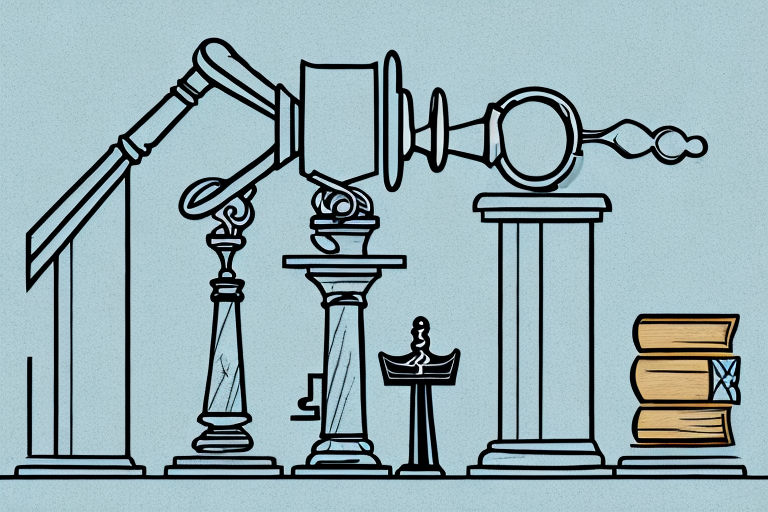Property law is an essential component of the legal system, dealing with the relationships between individuals and their property. Understanding property law is crucial for anyone who owns or intends to own property, whether it be real or personal. This article aims to provide a comprehensive overview of key areas of property law, including its definition, types of property, real property law, personal property law, and intellectual property law.
Understanding Property Law: An Introduction
Property law is a complex and multifaceted branch of civil law in-which property lawyers Sydney governs the rights and interests in tangible and intangible property. It involves the ownership, use, and transfer of property by individuals and entities. Property law covers a broad range of topics, including real estate, personal property, intellectual property, and other related areas.
Definition of Property Law
Property law is a set of legal rules and regulations that govern the ownership, use, and transfer of property. It is a branch of civil law that deals with the rights and interests in tangible and intangible property. Property law covers a wide range of issues, including the acquisition, use, and disposal of property, as well as the rights and obligations of property owners.
Property law is an essential component of the legal system, as it helps to protect the property rights of individuals and entities. It provides a framework in which individuals can acquire, use, and transfer their property, and it assists in the maintenance of social order by regulating the use of property and ensuring that property disputes are resolved through legal means.

Importance of Property Law
The importance of property law cannot be overstated. Property law plays a vital role in the functioning of modern society. It helps to protect the property rights of individuals and entities, providing a framework in which individuals can acquire, use, and transfer their property. Property law also assists in the maintenance of social order by regulating the use of property and ensuring that property disputes are resolved through legal means.
Without property law, there would be no legal framework for the ownership, use, and transfer of property. This would lead to chaos and uncertainty, as individuals and entities would be left to fend for themselves in determining who owns what property and how it can be used or transferred.
Types of Property: Real and Personal
There are two main types of property: real property and personal property. Real property includes land, buildings, and any natural resources that are attached to the land, such as minerals or water. Personal property includes any other property that is movable, such as vehicles, jewelry, and intellectual property.
Real property is often the subject of property law disputes, as it is typically more valuable and subject to greater regulation than personal property. Real property owners must comply with a range of legal requirements, including zoning laws, building codes, and environmental regulations.
Personal property, on the other hand, is typically less regulated than real property. However, personal property owners must still comply with a range of legal requirements, including tax laws and intellectual property laws.
Overall, property law is a complex and dynamic area of law that is essential to the functioning of modern society. Whether you are a property owner, a tenant, or a business owner, it is important to have a basic understanding of property law and how it affects your rights and obligations.
Real Property Law
Land Ownership and Rights
Land ownership in property law refers to the legal rights and responsibilities that an individual or entity has over a piece of land. This includes the right to use, develop, and protect the land, as well as the responsibility to pay taxes and comply with zoning laws and other regulations. In some cases, land ownership may be limited by easements or other legal arrangements that grant others rights over the land.
Land ownership is a fundamental concept in property law, and it has been the subject of much debate and controversy over the years. Some argue that land should be treated as a common resource, while others believe that individuals and entities should have the right to own and control land as they see fit. Regardless of one’s perspective, it is clear that land ownership plays a critical role in shaping our communities and our economy.
One of the most important aspects of land ownership is the right to use and develop the land. This includes the right to build structures, such as homes, businesses, and public facilities, as well as the right to use the land for agricultural, recreational, or other purposes. However, these rights are not absolute, and they may be limited by zoning laws, environmental regulations, and other legal requirements.

Transfer of Property: Sale and Lease
Real estate transactions involve the transfer of property ownership from one party to another. This can be done through a sale or transfer of ownership, or through a lease agreement. The process of transferring property ownership can be complex, involving various legal requirements and paperwork.
When a property is sold, the seller typically transfers ownership to the buyer in exchange for payment of a certain amount of money. This process is known as a conveyance, and it typically involves the preparation and execution of a deed. The deed is a legal document that transfers ownership of the property from the seller to the buyer.
Lease agreements, on the other hand, involve the transfer of the right to use a property for a certain period of time. In a lease agreement, the owner of the property (the landlord) agrees to allow another party (the tenant) to use the property in exchange for payment of rent. Lease agreements can be short-term or long-term, and they may include various terms and conditions that govern the use of the property.
Easements and Covenants
Easements and covenants refer to legal arrangements that grant parties specific rights over someone else’s property. Easements may grant others the right to access a property for specified purposes, such as utility companies accessing a power line. Covenants may restrict the use of a property, such as prohibiting the building of certain types of structures or activities.
Easements and covenants can be created in a variety of ways, including by agreement between the parties, by court order, or by operation of law. They can be temporary or permanent, and they can be exclusive or non-exclusive.
One common type of easement is the right of way, which grants someone the right to pass through another person’s property. This can be important for utilities, transportation, and other purposes. Covenants, on the other hand, are often used to maintain the character and value of a neighborhood or community. For example, a covenant may prohibit the use of a property for commercial purposes or require that certain architectural standards be met.
Zoning and Land Use Regulations
Zoning and land use regulations govern how individuals and businesses can use and develop their land. These regulations can limit the type, height, and size of buildings that can be constructed on a property, as well as the way in which the property can be used. These regulations are implemented at the local level and can vary significantly by jurisdiction.
Zoning and land use regulations are designed to promote public health, safety, and welfare by ensuring that land is used in a way that is compatible with the surrounding community. For example, zoning regulations may require that certain types of businesses be located in specific areas, or that buildings be set back a certain distance from the street. These regulations can also be used to protect natural resources, such as wetlands and wildlife habitats.
While zoning and land use regulations can be controversial, they play an important role in shaping our communities and our environment. By balancing the interests of property owners with the needs of the community as a whole, these regulations help to ensure that our neighborhoods are safe, healthy, and vibrant places to live and work.
Personal Property Law
Tangible and Intangible Property
Personal property includes any property that is movable and consists of both tangible and intangible property. Tangible property includes physical items such as cars, furniture, and clothing. Intangible property refers to property that has no physical form, such as intellectual property or contractual agreements.
Acquisition and Transfer of Personal Property
The acquisition and transfer of personal property involve a range of legal concepts, including contracts, sales, and secured transactions. These concepts help to ensure that parties are able to transfer and gain ownership of personal property in a consistent and efficient manner.
Secured Transactions and Liens
Secured transactions involve the use of personal property as collateral for a loan. This type of transaction generally involves the creation of a lien on the property, which gives the creditor a security interest in the property. In the event of a default, the creditor can seize and sell the property to recover the outstanding debt.

Lost, Mislaid, and Abandoned Property
Lost, mislaid, and abandoned property are different legal concepts that determine who has the right to claim ownership over lost or forgotten property. Lost property refers to property that has been unintentionally left behind and whose owner is unknown. Mislaid property refers to property that has been intentionally left behind but whose owner is unknown. Abandoned property refers to property that has been deliberately discarded or left behind.
Intellectual Property Law
Patents
Patents are a form of legal protection for inventors that give them exclusive rights to their invention for a set period of time. Patents are intended to encourage innovation by giving inventors an exclusive right to produce and sell their invention without competition.
Trademarks
Trademarks are a form of legal protection for businesses that grant them the exclusive right to use a particular name, symbol, or design for their products or services. Trademarks help to protect businesses from imitators and competitors who may try to profit from their reputation or success.
Copyrights
Copyrights are a form of legal protection for creators of original artistic and literary works, such as paintings, books, and music. Copyrights give creators the exclusive right to control the use and distribution of their works, preventing others from copying or distributing their creations without permission.
Trade Secrets
Trade secrets refer to any valuable business information that is not generally known to the public, such as confidential customer lists or manufacturing processes. Trade secrets are protected by law and are typically kept confidential through non-disclosure agreements and other legal means.
Conclusion
Property law is a complex and ever-evolving area of law that affects virtually every aspect of modern society. Understanding the key areas of property law is essential for anyone who owns or intends to own property, whether it be real or personal. This comprehensive overview has provided an introduction to the various types of property, including real and personal, and the legal principles that govern their ownership, transfer, and use. Whether you are a property owner or simply have an interest in understanding the legal system, property law is a fascinating and essential area of study.
More to read: The Process of Corporate Insolvency Explained by Lawyers

